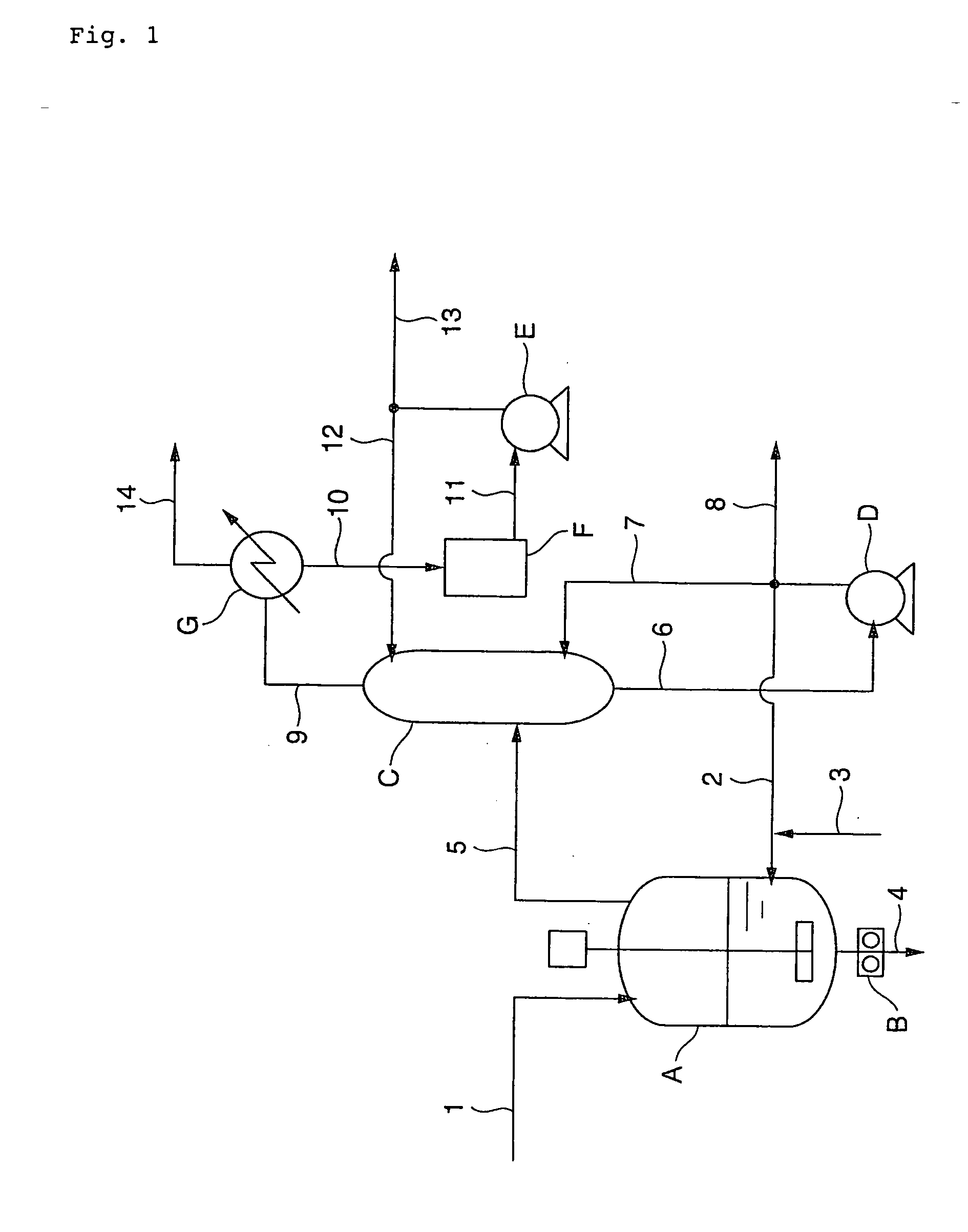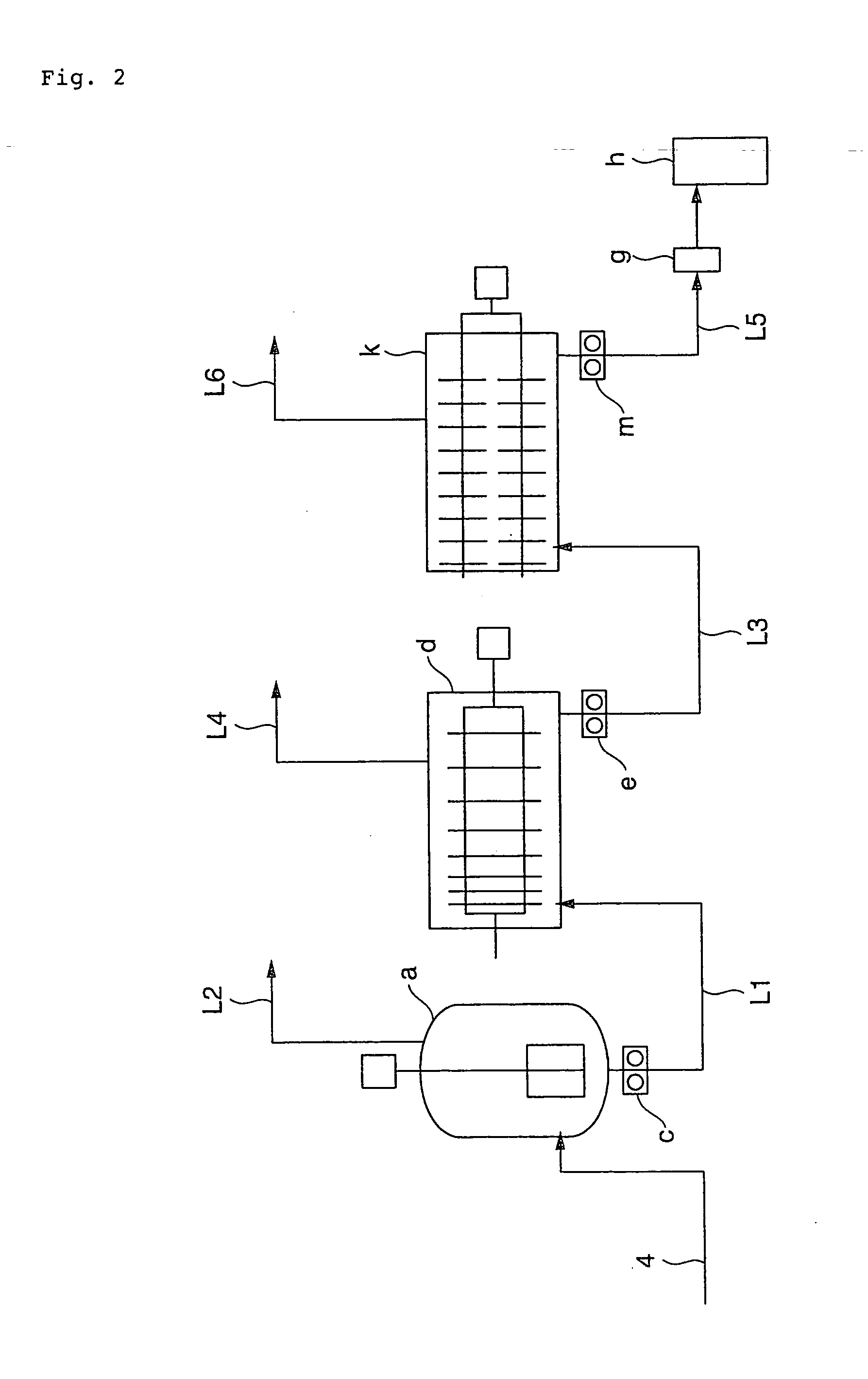Polybutylene Terephthalate Pellet, Compound Product and Molded Product Using the Same, and Processes for Producing the Compound Product and Molded Product
a technology of polybutylene terephthalate and molded products, which is applied in the direction of conductive materials, non-conductive materials with dispersed conductive materials, and conductors, etc., can solve the problems of increasing the concentration of end carboxyl groups therein, poor color tone, and higher intrinsic viscosity, etc., to achieve excellent color tone, less impurity content, and good hydrolysis resistance
- Summary
- Abstract
- Description
- Claims
- Application Information
AI Technical Summary
Benefits of technology
Problems solved by technology
Method used
Image
Examples
example 1
[0135] PBT was produced through the esterification process shown in FIG. 1 and the polycondensation process shown in FIG. 2 by the following procedure. First, terephthalic acid was mixed with 1,4-butanediol at 60° C. at a molar ratio of 1.00:1.80 in a slurry preparation tank. The thus obtained slurry was continuously supplied at a feed rate of 40.0 kg / h from the slurry preparation tank through a raw material feed line (1) to an esterification reaction vessel (A) equipped with a screw-type stirrer which was previously filled with PBT oligomer having an esterification rate of 99%. Simultaneously, a bottom component of a rectifying column (C) at 185° C. was supplied at a feed rate of 18.4 kg / h through a recirculation line (2) to the reaction vessel (A), and further a 1,4-butanediol solution containing 6.0% by weight of tetrabutyl titanate as a catalyst at 65° C. was supplied through a catalyst feed line (3) to the reaction vessel (A) at a feed rate of 95 g / h (30 ppm by weight based on ...
example 2
[0140] The same procedure as defined in Example 1 was conducted except that the inside temperature in the second polycondensation reaction vessel (d) was changed to 243° C., and the pressure and residence time in the third polycondensation reaction vessel (k) were changed to 130 Pa and 100 min, respectively. The thus obtained PBT pellets having an average IV of 1.25 dL / g, a titanium content of 30 ppm by weight and a ΔIV of less than 0.01 dL / g were molded into a film at 250° C. As a result of evaluating the resultant film, it was confirmed that the film exhibited a less number of fish eyes and a good appearance. The results are shown in Table 1.
example 3
[0141] The same procedure as defined in Example 1 was conducted except that the inside temperature and residence time in the second polycondensation reaction vessel (d) were changed to 244° C. and 80 min, respectively, and the pressure and residence time in the third polycondensation reaction vessel (k) were changed to 130 Pa and 120 min, respectively. The thus obtained PBT pellets having an average IV of 1.35 dL / g, a titanium content of 30 ppm by weight and a ΔIV of less than 0.01 dL / g were molded into a film at 250° C. As a result of evaluating the resultant film, it was confirmed that the film exhibited a less number of fish eyes and a good appearance nevertheless the high average IV. The results are shown in Table 1.
PUM
| Property | Measurement | Unit |
|---|---|---|
| Temperature | aaaaa | aaaaa |
| Fraction | aaaaa | aaaaa |
| Percent by mass | aaaaa | aaaaa |
Abstract
Description
Claims
Application Information
 Login to View More
Login to View More - R&D
- Intellectual Property
- Life Sciences
- Materials
- Tech Scout
- Unparalleled Data Quality
- Higher Quality Content
- 60% Fewer Hallucinations
Browse by: Latest US Patents, China's latest patents, Technical Efficacy Thesaurus, Application Domain, Technology Topic, Popular Technical Reports.
© 2025 PatSnap. All rights reserved.Legal|Privacy policy|Modern Slavery Act Transparency Statement|Sitemap|About US| Contact US: help@patsnap.com


